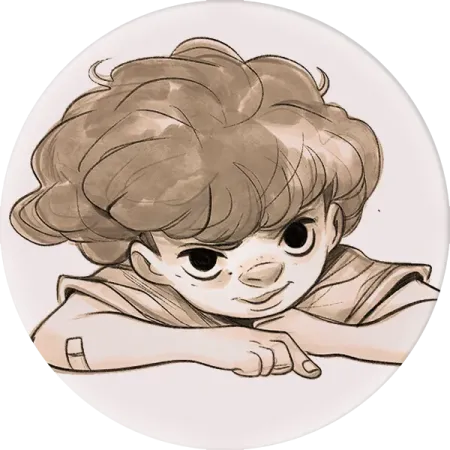The Citadel
In the dark, a truth is revealed
more terrifying than the rumors.
Anne sees what Heino has built –
and understands how hard
it will be to bring it down.
After the eagles flew off, Anne and the backpack got to work preparing their hideout for the stay. First, they pulled up tough grass and made two little nests — just enough to avoid sitting on cold, hard ground all the time. Then they carefully shifted the sharpest stones so they wouldn’t keep bumping into them. Finally, they shaped a kind of lookout from which they could monitor the perimeter of the citadel.
By that time, dawn had begun to break, and they hurried to hide so as not to be seen. They pressed against the lookout and waited eagerly for any sign of life from the camp.
At first, nothing happened — but shortly after sunrise, figures began to skitter slowly around the buildings. Most of them were spiders in uniform, ugly and hairy. Still, there was no sign of the prisoners. An hour passed without much change in the view.
“The Elves!” the backpack exclaimed at one point. “Over there — do you see them?”
“Where?” Anne jumped, startled — she had dozed off out of boredom and exhaustion.
No explanation was needed. Lit by the morning sun, the thin, membranous wings of the four elves shimmered like mirrors. They were still wearing their bright uniforms with cords and epaulettes — worn out and tattered by now, of course, but unmistakably the same old uniforms they’d always had.
The four of them looked a bit thinner and grumpier, but still proud as ever. Anne was moved to tears with joy and tenderness.
“My darlings! We’ve finally found them. If only I could hug them!”
Reflections on the scene
⸻ ❦ ⸻
– ❦ –
In this scene, we glimpse for the first time the full extent of Heino’s transformation of the Forest into a totalitarian system of surveillance and control. From the sheer scale of the Citadel—Heino’s secret command center—down to the electrified fences and owl patrols, the setting evokes images of military-industrial complexes, high-security prisons, and dystopian superstates.
The presence of the Citadel next to a hydroelectric power plant is no coincidence. Power—both metaphorical and literal—is Heino’s obsession. He has drained the river, displaced life, and erected cold, efficient machinery in its place. What was once natural and wild has been tamed, weaponized, and put under twenty-four-hour surveillance. The metaphor deepens when we see who Heino has imprisoned: Anne’s former companions, the allies of the Forest, and even incidental characters like the rogue seagull. He has locked away not just people, but stories—living reminders of a world he wants to erase or rewrite.
And yet, there is resistance. The prisoners may be ragged and scattered, but they are not broken. Their postures are upright. Their spirits flicker with dignity. And Anne, standing above and looking down, is beginning to understand that this story is no longer just about her escape—it’s about rescue. About return. About facing what has been twisted and taken.
The Citadel scene marks the emotional turning point of the book. Anne has allies again. She is no longer a fugitive, but a leader. The path forward will be dangerous—but it has become clear. It leads straight into the lion’s den.
The symbolism is unmistakable: an empire built on surveillance and silence can be undone by memory and voice. And Anne, for the first time, isn’t just reacting—she’s choosing. The citadel doesn’t just reveal the scale of Heino’s power; it calls forth Anne’s own.






